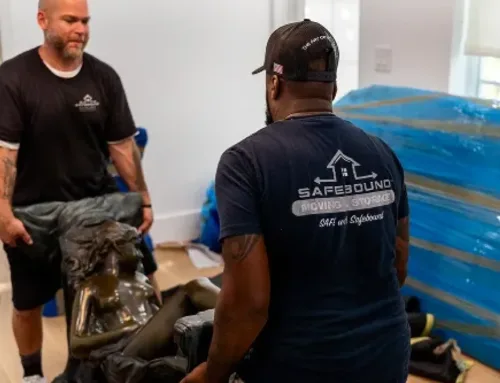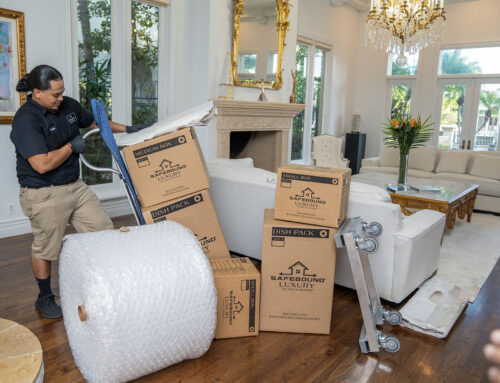Moving to a new home can be an exciting adventure, but it often comes with its fair share of stress and physical demands. Moving involves packing, lifting heavy boxes, and long hours of driving or coordinating logistics. All these factors can take a toll on your physical well-being if you’re not careful. However, with a little planning and some mindful strategies, you can stay fit and active during your relocation.
In this blog post, we’ll share tips and advice on how to master the move while keeping your health a top priority.
1. Plan Ahead
Before the moving trucks roll in, take some time to plan your move meticulously. A well-organized move is less likely to throw your routine into chaos. Start by creating a checklist that outlines all the tasks you need to complete before, during, and after the move. This will help you allocate time for physical activities and breaks, ensuring that you don’t neglect your health.
2. Declutter and Downsize
One of the best ways to make your move physically easier is by decluttering and downsizing your belongings. Go through your possessions and decide what you no longer need. Donate, sell, or recycle items that are in good condition, and toss out anything that’s beyond repair. Not only will this lighten your load on moving day, but it will also give you an opportunity to engage in some physical activity and get your heart rate up.
3. Pack Smart
When packing your belongings, think strategically about the weight and size of your boxes. Try to distribute the weight evenly among boxes to make them easier to lift and carry. Use smaller boxes for heavy items and larger boxes for lighter ones. Additionally, invest in quality packing materials, such as sturdy boxes and packing tape, to avoid accidents and injuries caused by poorly packed items breaking through their containers.
Don’t have enough time for packing your boxes? Our moving company will deliver the professional packing and unpacking services you need for the best moving experience on move day.
4. Lift with Proper Technique
Lifting heavy boxes and furniture is one of the most physically demanding aspects of moving. To prevent back injuries and strains, use proper lifting techniques. Bend your knees, not your back, when picking up items from the ground. Keep the object close to your body, and use your leg muscles to lift, not your back. If something is too heavy to handle on your own, don’t hesitate to ask for help or consider using lifting straps or a dolly.
5. Take Regular Breaks
Moving can be a marathon, not a sprint. Remember to take regular breaks to rest and hydrate. These breaks will not only help you stay physically active but also prevent fatigue and overexertion. Use your breaks as an opportunity to stretch your muscles and reduce tension in your body. Taking short walks or doing some light yoga stretches can be incredibly beneficial during the moving process.
6. Stay Hydrated and Eat Well
Proper nutrition and hydration are essential for maintaining your energy levels during a move. Pack healthy snacks and plenty of water to keep yourself nourished throughout the day. Avoid relying on fast food or processed snacks, as they can leave you feeling sluggish. A well-balanced meal can do wonders for your stamina and overall well-being.
7. Get a Good Night’s Sleep
In the chaos of preparing for a move, it’s easy to neglect your sleep. However, a lack of rest can have a significant impact on your physical and mental health. Aim for a full night’s sleep before the moving day, and try to stick to your regular sleep schedule as much as possible during the transition. A well-rested body and mind are better equipped to handle the demands of moving.
8. Stay Active During Transit
If you’re moving a long distance and spending hours on the road, make an effort to stay active during transit stops. Use rest areas as opportunities to stretch your legs, walk around, and do some light exercises. Sitting for extended periods can lead to stiffness and discomfort, so take every chance to keep your body moving.
9. Unpack Mindfully
After you’ve arrived at your new home, resist the urge to rush through the unpacking process. Similar to packing, unpack room by room and take breaks as needed. Unpacking can be physically demanding, so prioritize items you’ll need immediately and leave less essential tasks for later. Remember to stay hydrated and continue eating nutritious meals to keep your energy levels up.
10. Explore Your New Neighborhood
Once you’ve settled into your new home, take the opportunity to explore your new neighborhood. Go for walks or bike rides to familiarize yourself with the area. Discover local parks, trails, and fitness centers where you can maintain your fitness routine. Staying active and getting to know your surroundings can also help reduce the stress of adjusting to a new environment.
11. Consider Professional Movers
If the thought of managing a move while staying fit and active seems overwhelming, consider hiring professional movers. Experienced movers can handle the heavy lifting, leaving you with more energy and time to focus on other aspects of the move. While it may be an additional expense, the reduced physical strain and stress can be well worth it in the long run. If you’re living in Florida and need movers in West Palm Beach, look no further than Safebound Moving & Storage, your trusted partners in stress-free relocation. Our experienced movers can handle the heavy lifting, leaving you with more energy and time to focus on other aspects of the move, ensuring a smooth and efficient transition.
Conclusion
Moving doesn’t have to be synonymous with a sedentary, stressful experience. By planning ahead, packing smart, staying active, and taking care of your physical and mental well-being throughout the process, you can master the move while staying fit and active. Remember that relocating to a new home is a significant life event, and your health should always be a top priority. So, embrace the adventure of moving, and let it be an opportunity to maintain your fitness and well-being along the way.





